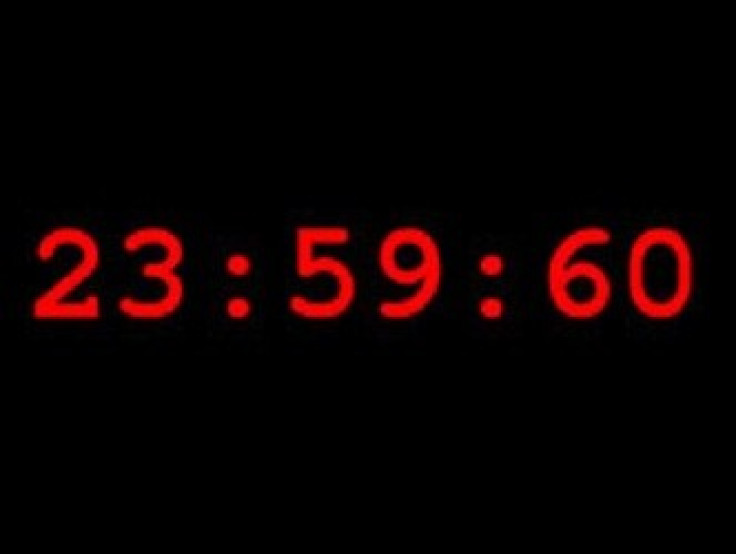Scientists Hold Back Time For a Second

Scientists held back time for a second on June 30 in order to compensate for earth's slow rotation.
Scientists have found that earth is taking a longer time to complete one day or technically a solar day. So they decided to add an extra second or leap second to compensate for the earth's slow rotation.
"The solar day is gradually getting longer because earth's rotation is slowing down ever so slightly," said Daniel MacMillan, scientist at the Nasa's Goddard Space Flight Center in Greenbelt, in a statement.
Usually our clock would move from 23:59:59 to 00:00:00, but on June 30 the clock moved from 23:59:59 to 23:59:60, and then to 00:00:00. This means most of the clocks would be turned off for one second.
Earth time is usually measured by using atomic clocks that derive their time from the vibration of the atom.
International Atomic Time is calculated by the International Bureau of Weights and Measures (BIPM) from the readings of more than 200 atomic clocks located in metrology institutes and observatories in more than 30 countries around the world. Even though it gives accurate measurement, atomic clocks do not calculate earth's slow rotation.
The earth's rotation is slowing down overall because of tidal forces between earth and the moon. Roughly every 100 years, the day gets about 1.4 milliseconds, or 1.4 thousandths of a second, longer. Even though it sounds quite less, if we add up that small discrepancy every day for years and years, it can make a very big difference indeed.
"At the time of the dinosaurs, earth completed one rotation in about 23 hours," said MacMillan. "In the year 1820, a rotation took exactly 24 hours, or 86,400 standard seconds. Since 1820, the mean solar day has increased by about 2.5 milliseconds."
To calculate the slow rotation and to find the exact time, scientists have been using an extremely precise technique called Very Long Baseline Interferometry (VLBI).
VLBI is a type of astronomical interferometry used in radio astronomy. It allows observations of an object that are made simultaneously by many telescopes to be combined from different locations, according to a Wikipedia report.
The data retrieved from the VLBI is compared with the atomic clock data. This shows scientists exactly how many milliseconds were lagging behind and allows them to add an extra second to compensate for earth's slow rotation.
© Copyright IBTimes 2024. All rights reserved.





